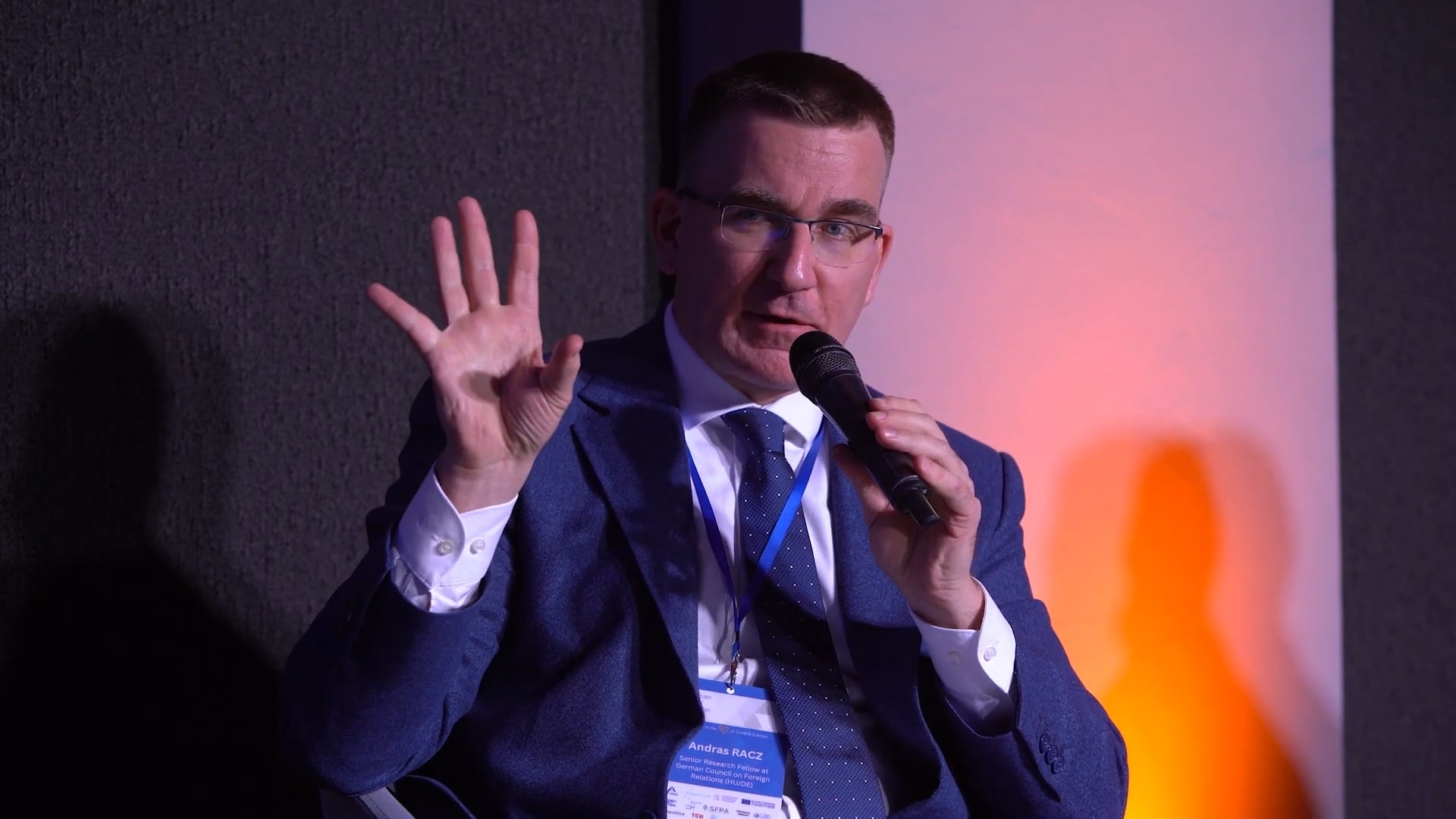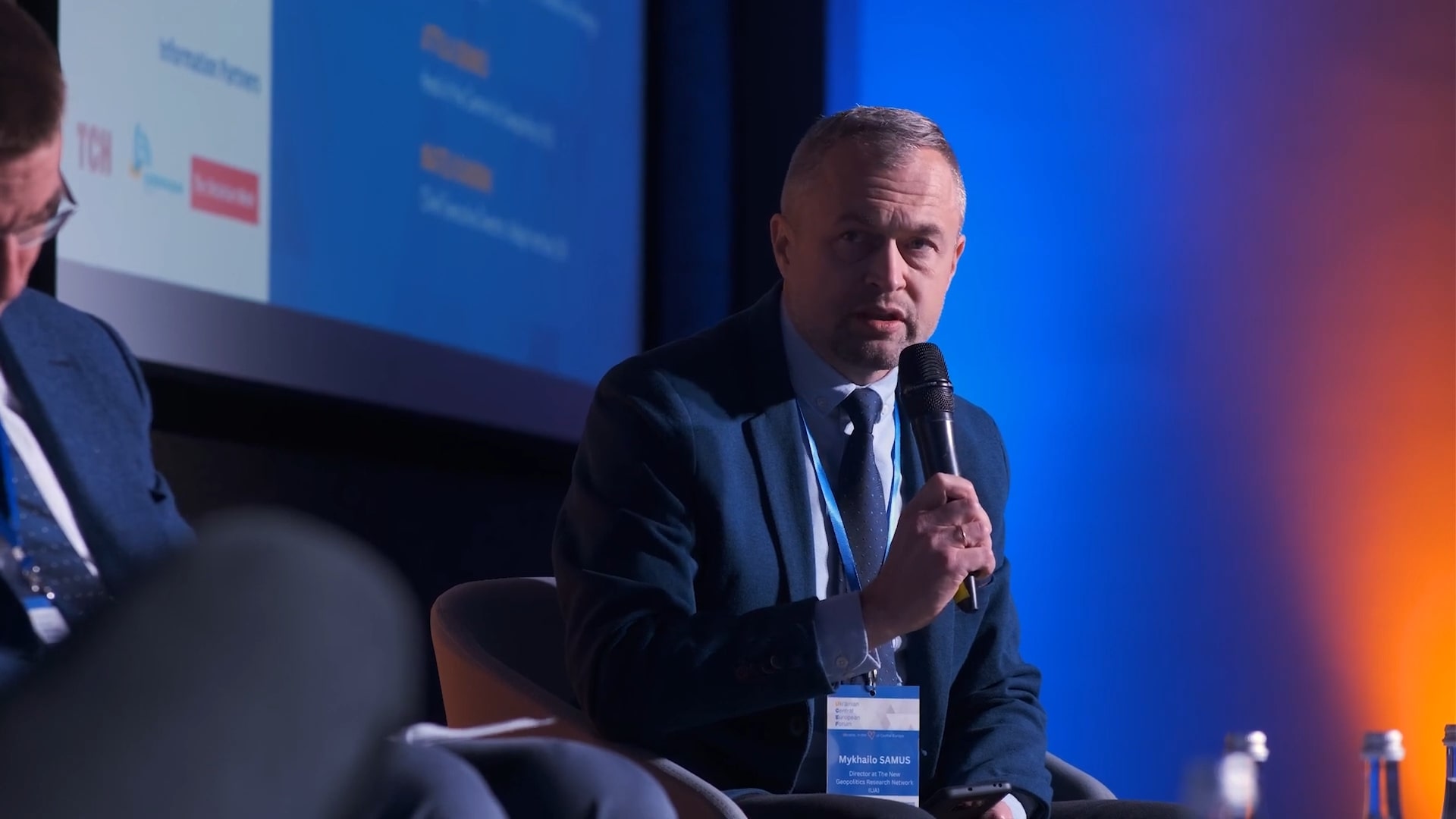Ukraine-EU joint defense industry production gains momentum

The defense aid from allies will remain crucial for Ukraine in 2024 but the share of jointly produced weapons will continue increasing.
It is impossible to develop something so complicated, like a defense industry, without planning for several years with solid contracts and budgeting.
At the beginning of the Russo-Ukrainian war, this condition played against Ukraine, not preventing it from immediately increasing production and establishing cooperation.
Yet, now it as become a benefit — Ukraine can rely on joint production and established contracts, planning for years ahead, said Andras Racz, Senior Research Fellow at the German Council on Foreign Relations, and Mykhailo Samus, director at The New Geopolitics Research Network, while speaking at the Ukrainian Central European Forum 2023 in Lviv, Ukraine.
Here are key takeaways from the analysis they presented.
Growing interdependency: from 0 to 28 EU & NATO states openly selling, donating, and jointly producing weapons with Ukraine
Before 2014, defense industry relations between Ukraine and the West practically did not exist, Raczs said while presenting his analysis. There were only two countries of today’s NATO that purchased some weapons from Ukraine: North Macedonia purchased attack helicopters and SU-25 jets during the 2001 crisis but in very small numbers; Slovakia purchased BMP-2s but again in very small numbers, and two Albatros jets.
Before 2014, Ukraine did not have any Western weapon system at all.
This started to change after the Revolution of Dignity and the beginning of the Russo-Ukrainian war in Donbas in 2014. The number of countries supplying Ukraine with weapons grew from zero to nine between 2014 and 2022: Poland. Czechia, Canada, France, Lithuania, United Arab Emirates, US, UK and Turkiye. This was a lot compared to the 2000s, but is mimiscule compared to present numbers.
After 2014, Ukraine hardly exported anything to the West except a few air-to-air missiles to countries that operated Soviet fighter jets.
After the beginning of the full-scale war in 2022, defense-industrial cooperation between Ukraine and the West skyrocketed. Referring only to the declared assistance, currently 28 countries are supplying Ukraine with weapons on a donation and commercial basis. This is true of almost all EU and NATO countries. In addition, there are also multilateral formats like the EU peace facility.
Сovert suppliers
A few more countries supply Ukraine with weapons, but not openly, or don’t declare all systems they deliver. Their undeclared weapons have been spotted on the battlefield, like Finnish, Israeli, Serbian weapons, and some from other countries.
Referring only to the open source information, Serbia has been delivering 120mm mortar shells to Ukraine, not directly but through intermediaries. Serbia also delivered ammunition for artillery systems, small arms ammunition, and a lot of other things using neighboring countries or Western Balkans as intermediaries.
Israel hasn’t delivered anything officially, but there have been Israeli-made armor personal carriers spotted on the battlefield, and there is sporadic information about electronic warfare cooperation. Some more countries haven’t declared support. They just deliver.
After a U-turn, Germany became the second largest military donor to Ukraine, after the USA
“Regarding Germany, had anybody told me two years ago that Germany would send tanks into an ongoing war, I surely wouldn’t have believed it,” Racz said, commenting on the country he specializes in.
“Germany itself made a big step forward. Remember that in January 2022, half of the world was laughing at the German military assistance of 5,000 helmets to Ukraine. The whole thing started with 5,000 helmets. At the moment, depending on how you count, Germany is the second or the third largest donor supplying weapons for Ukraine. This is huge, and of course, it takes time because of logistical reasons.”
There have always been surprising political issues in the German case. Sending tanks, for example, was politically very sensitive. Even though, in reality, German artillery systems do a lot more killings on the battlefield than tanks will ever do. Still, politically, the tanks were the sensitive story because, for large parts of the German electorate, the very question that “the German tanks on the Ukrainian soil would be killing Russians again was very sensitive.”

By moving from stockpile deliveries to contracts, Ukraine will secure long-term supplies from allies
Providing military aid to Ukraine as a donation helped a lot at the beginning of the war and remains crucial for 2024, especially regarding ammunition. However, gradually replacing donations with joint production and long-term contracts is the right way to go, which the Ukrainian state has been pursuing since 2023.
Inside Ukraine’s campaign to crush Russia with combat drones
Providing weapons from stockpiles that countries already have was easier in the beginning than allocating huge sums of public money from the budget for the production of new weapons. The letter required a more difficult and complex political decision. That is why when the full-scale war started, western governments opted for the first policy, hoping to prevent a full-scale disaster.
This support helped Ukraine withstand. Yet, regarding the result of this various stockpile weapons delivery, the Ukrainian armed forces started operating the most diverse army in the world.
Ukraine is using 11 different types of tanks, at least 15 different types of infantry fighting vehicles, at least 38 different types of self-propelled and towed artillery systems, in addition to multiple launch rocket systems, and not less than 64 different types of personal carriers. That’s huge, and this creates logistical complexities.
When the war became protracted, stockpiles expectedly shrank, and a new, more systemic approach became needed. Long-term contracts with the defense industries require long-term planning and commitment of hundreds of millions of euros as investments.
“It means you have to cut that money from somewhere else, and this is the key element why the West was terribly slow, and it’s still not quick enough,” Racz emphasized.
Maintenance of delivered equipment and joint production created interdependency between Ukraine’s and Western defense industry
At first, structural repairs of the delivered equipment had to be done abroad, and this created a lot of interdependency, which did not exist even a year ago. New repair plants were set up in Poland and Lithuania, and more are to come in Romania and other countries. It’s not only the delivery of weapon systems but also the maintenance and repair of weapon systems, which is creating new lasting forms of interdependency.
The next step, which is already being implemented, is doing maintenance inside Ukraine.
In August 2023, Rheinmetall signed an agreement with the state-owned Ukrainian Defense Industry about setting up a joint venture (51% owned by Reinmetall and 49% by Ukraine). Rheinmetall invested about €200 million to create its new plant in Ukraine, while Ukraine provided the ground, buildings, and connection to the power grid for free.
This facility is going to operate on Ukrainian soil to conduct complete maintenance inside the country and also produce new vehicles from the end of 2024. Such a scale of investment is a huge step forward, and many other joint ventures are already being established, such as the joint venture between Slovakia and Ukraine on the production of Bohdana artillery systems.
Another example of the lasting and long-term cooperation with Rheinmetall is the already signed multi-million contract to deliver thousands of artillery shells during 2025.
Ukraine orders millions worth of artillery ammo from Rheinmetall
The interesting thing about the Rheinmetall facility in Ukraine is that one needs to protect one’s investment. And one possible solution, which not necessarily will happen but which is possible, according to Racz, is the deployment of Rheinmetall’s own short-range air defense systems in full cooperation with the Ukrainian state.
If this happens, it would mean that a NATO and EU country, in cooperation with Ukraine, takes over the protection of a small part of Ukraine’s airspace. This would be yet another step further.
Joint weapons production will be lasting
These are only the first steps. Other joint ventures will also come both on Ukrainian soil and abroad with Ukrainian shares, and some possibly are already operating, including Estonia’s Milrem Robotics, unnamed Czech companies, joint ammunition production with the US and Italy, and more.
That means not only large sums of money involved, but also large construction projects. These things are not set up in one day; nor can they be cancelled in one day either, meaning that some caution is necessary when assessing declarations of individual politicians about not delivering weapons anymore.
Such a case happened with Slovak Prime Minister Robert Fico, who backtracked his pre-election statements about not delivering any weapons to Ukraine and said instead that Slovakia wouldn’t deliver weapons from its own stocks, but this doesn’t apply to production and contracts.
When such declarations occur in election campaigns, there is no need to overestimate them. Defense cooperations are long-term projects with billions of euros involved. These don’t get canceled instantly.
The scale of investments into joint production both on Ukrainian soil and in the partner countries is not only about the war but also about the future Ukrainian army. It will have to get rid of most of the inherited ex-Soviet systems.
The majority of those ex-Soviet systems will be destroyed by the war’s end or become unrepairable. The Ukrainian Army is already undergoing a rearmament process to Western-made weapons and Ukrainian-made weapons. Business logic will dominate this process, whichever shape and timing the victory takes place.

Ukraine will become a competetive weapons exporter globally as soon as the war ends
When it comes to interdependence after the war, the Ukrainian defense industry will again come online as an exporter of weapons. Ukraine is already producing some systems that would be very competitive on the World Market, such as naval drones. Ukraine’s Naval drone has capacities of a high level, but it also applies to low detection long range unmanned aerial vehicles and the Bohdana system, which also have a lot of potential. Before the war, Ukraine was a substantial player in the world arms export market, and after the war, this role will only increase.
Meet Bohdana, Ukraine’s gritty goddess of war with NATO-caliber punch
EU and NATO are heading towards lasting massive interdependence between the Ukrainian defense industry, the Ukrainian armed forces, and all other Western Armed Forces.
“The norm is interdependence, and this interdependence is actually a security guarantee for the whole of Europe, including Ukraine,” Racz concluded in the end of his presentation.
The Western defense industry should learn to work in war mode
Whether Western states want to replenish their own stocks or sell weapons to Ukraine, their industry should work in war mode, increasing production several times. And this requires additional investments, added Mykhailo Samus, director at The New Geopolitics Research Network.
“After 24 February 2022, we find out that our defense industry is still living in the peacetime but unfortunately we are living in wartime. We cannot live any more in the peace conditions. After 30 years of romantic and naive understanding of the situation Europe finally needs to change the perception of Russia and the understanding of how to develop Armed Forces, how to change doctrines.”

The Ukrainian military has learned many lessons on the battlefield, resulting in an absolutely different doctrine than even two years ago.
Now, Ukraine has network-centric warfare with drones and vast elements of electronic warfare integrated and even with the use of artificial intelligence. Compared to last year, when Ukraine had a deficit of tanks and basic armament, now the country needs technology and a combination of technologies to ramp up production, increase quality, and create a possibility and capability to make a breakthrough on the front line.
Electronic warfare, drones, command and control systems, reconnaissance, and intelligence systems will play more and more significant roles.
“These new trends and technologies also change the role of human beings on the battlefield. There is no need to mobilize 100,000 additional soldiers if the army has 1 million FPV drones, for example. Ukraine is currently using nearly 10,000 FPV drones per month and the next year this number will further increase,” Samus said.
Yet, Russia is doing the same, and this experience will be useful for all European armies, he continued.
The lessons of this war and, of course, the experience of the Ukrainian Armed Forces should be taken very seriously for changes in the doctrinal and organizational levels at the ally states’ armies. For example, every Ukrainian brigade now has a strike UAV company. No country in the world has such a unit inside of every brigade, and these strike capabilities are absolutely new for the battlefield.
Currently, discussions started at the NATO level about joint contingency planning for all NATO and EU countries in the sphere of the defense industry. NATO has contingency planning on the operational use of countries’ forces, but at the same time, it doesn’t have any contingency planning on defense industry development.
From ammunition production to drones and equipment, the West should multiply production and invest in it, not only to help Ukraine win and prevent Russia’s war from spreading into the EU, but also to strengthen its own security.



